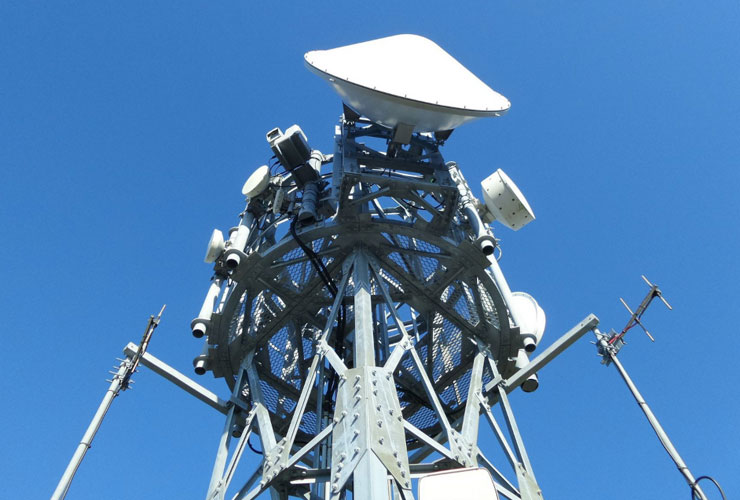SS7 und Mobilfunknetze: Ein komplexes Zusammenspiel von Möglichkeiten und Risiken

Die mobile Technologie hat die Art und Weise, wie wir kommunizieren, revolutioniert. Trotz ihrer Vorteile birgt sie jedoch auch einige ernsthafte Sicherheitsrisiken. Eines dieser Risiken ist das sogenannte Signalisierungssystem 7 (SS7), ein wesentlicher Bestandteil des Mobilfunknetzes, der leider auch für zahlreiche Sicherheitslücken bekannt ist.
Herkunft und Funktion von SS7
SS7, ein in den 1970er Jahren eingeführtes Protokollsystem, ist die Hauptschlagader der globalen Telefonnetze. Ursprünglich zur Weiterleitung von Telefonanrufen entwickelt, wurde es später erweitert, um Dienste wie SMS zu unterstützen. Dank SS7 können Sie problemlos jemanden auf der anderen Seite der Welt anrufen, unabhängig von Ihrem Mobilfunkanbieter oder Standort.
Aber was genau ermöglicht SS7? Wenn Sie beispielsweise jemanden in einem anderen Land anrufen, sorgt SS7 dafür, dass Ihr Anruf korrekt weitergeleitet wird. Es ermöglicht auch Funktionen wie Roaming, sodass Sie Ihr Mobiltelefon im Ausland nutzen können.
Gefahren von SS7
Jede Technologie hat ihre Schattenseiten, und SS7 ist keine Ausnahme. Aufgrund seines Alters und der Tatsache, dass Sicherheit während seiner Entwicklung keine primäre Sorge war, ist SS7 anfällig für verschiedene Angriffe:
- SMS-Interception: Angreifer können SMS-Nachrichten abfangen, was besonders alarmierend ist, da viele Systeme SMS für die Zwei-Faktor-Authentifizierung verwenden.
- Anrufinterception: Datenschutz ist heute von größter Bedeutung, und SS7 ermöglicht es Angreifern, private Telefonate abzuhören.
- Standortverfolgung: SS7 ermöglicht die Echtzeit-Verfolgung des Benutzerstandorts.
- Vortäuschung und Betrug: Übeltäter können Anrufe und Nachrichten fälschen, was zu schweren Betrugsfällen führt.
- Dienstverweigerung: Dies kann das Netzwerk lähmen und die Kommunikation verhindern. Kriminelle Banden können diese Schwachstellen für betrügerische Zwecke ausnutzen oder von staatlichen Akteuren zur Überwachung von Dissidenten oder anderen Zielgruppen genutzt werden.
Bisherige SS7-basierte Angriffe
SS7-basierte Angriffe sind ein globales Problem. Während spezifische Beispiele oft nicht öffentlich detailliert werden (teilweise aus Sicherheitsgründen und teilweise, weil viele Opfer nicht einmal wissen, dass sie angegriffen wurden), heben einige bekannte Fälle und Berichte die globalen Schwachstellen des Systems hervor.
1. 60 Minutes Australia (2016):
Ein Bericht in der australischen Fernsehsendung "60 Minutes" zeigte, wie SS7-Schwachstellen ausgenutzt werden können, um Telefonanrufe und Textnachrichten abzufangen. In diesem Bericht hackten Sicherheitsexperten mit seiner Erlaubnis das iPhone eines australischen Politikers und demonstrierten die Schwachstellen des Systems.
2. US-Netzwerkbewertung:
In den USA zeigte eine Überprüfung, dass alle bedeutenden Telekommunikationsnetze in gewissem Umfang anfällig für SS7-basierte Angriffe waren. Dies führte zu einem erhöhten Bewusstsein und zu Forderungen nach Verbesserungen der Netzwerksicherheit.
3. Warnungen von Regierungsbehörden:
Zahlreiche Regierungsbehörden weltweit, einschließlich der US Federal Communications Commission (FCC) und der UK National Crime Agency (NCA), haben vor den Gefahren und Schwachstellen von SS7 gewarnt.
4. Überwachung und Spionage:
Es gibt Hinweise darauf, dass verschiedene Regierungen SS7-Schwachstellen ausnutzen, um